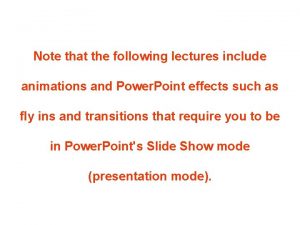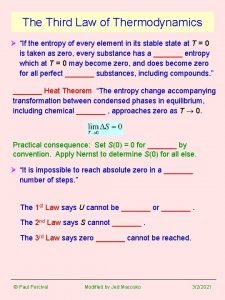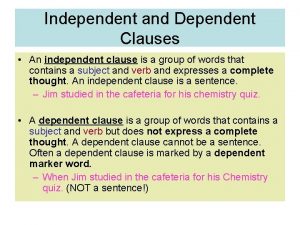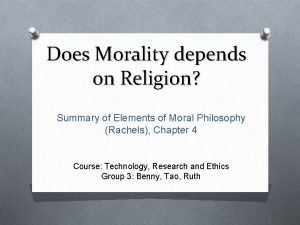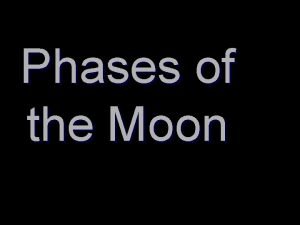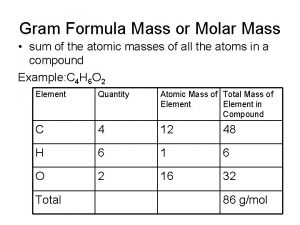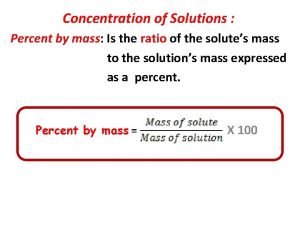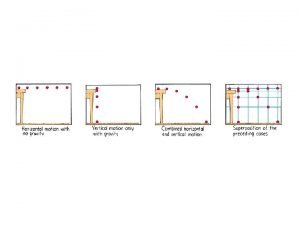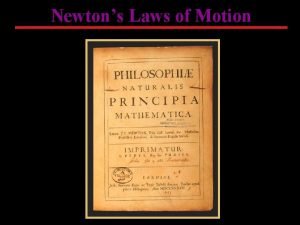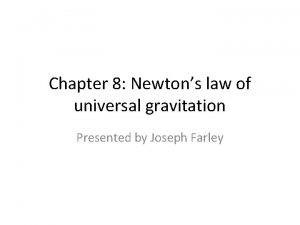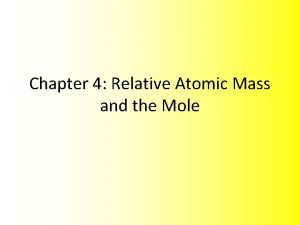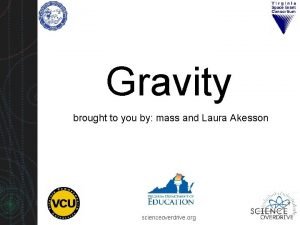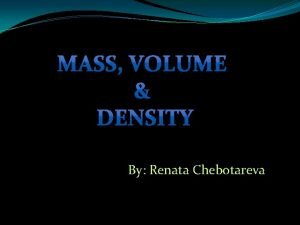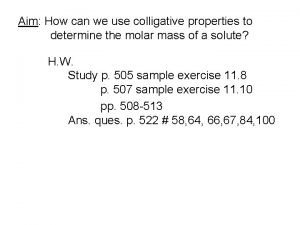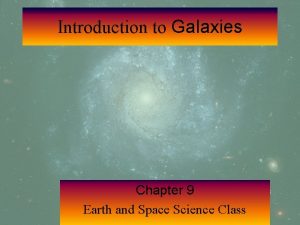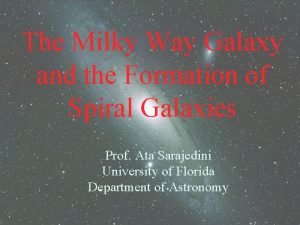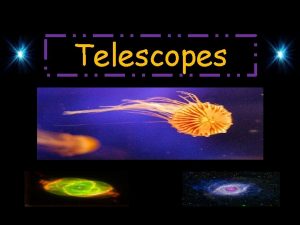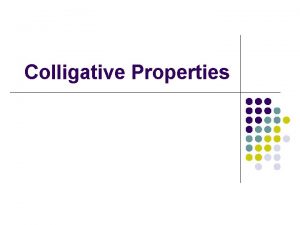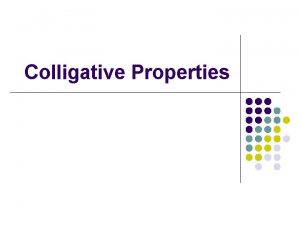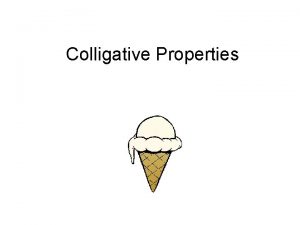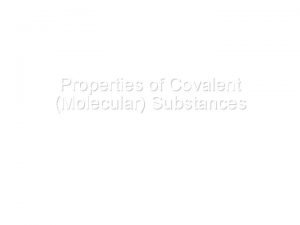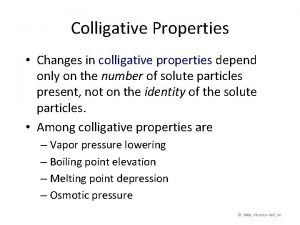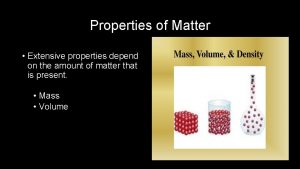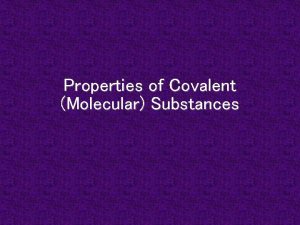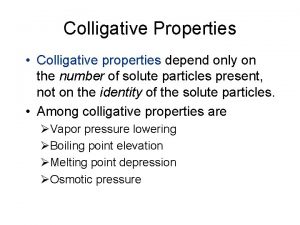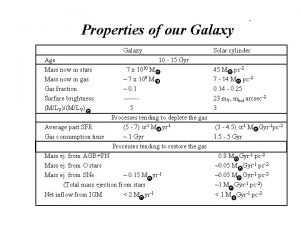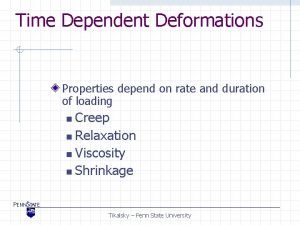GALAXY PROPERTIES DEPEND ON 1 Galaxy mass 2





















![Spectroscopy: using the [OII]3727 line Incidence of emission-line galaxies in 10 clusters at z=0. Spectroscopy: using the [OII]3727 line Incidence of emission-line galaxies in 10 clusters at z=0.](https://slidetodoc.com/presentation_image/2c41de540a9339bb636adbe3752c9ad9/image-22.jpg)









![EDis. CS: [OII] – sigma relation Fraction of galaxies with [OII] emission Ø Most EDis. CS: [OII] – sigma relation Fraction of galaxies with [OII] emission Ø Most](https://slidetodoc.com/presentation_image/2c41de540a9339bb636adbe3752c9ad9/image-32.jpg)



![EDis. CS: [OII] – sigma relation Z=0. 4 to 0. 8 Fraction of galaxies EDis. CS: [OII] – sigma relation Z=0. 4 to 0. 8 Fraction of galaxies](https://slidetodoc.com/presentation_image/2c41de540a9339bb636adbe3752c9ad9/image-36.jpg)



















- Slides: 55

GALAXY PROPERTIES DEPEND ON 1) Galaxy mass 2) Redshift 3) Environment

redshift s ga la xy s ma environment WHY ?

CLUSTERS OF GALAXIES Abell 2218 - Hubble Space Telescope – courtesy NASA see my reviews on astro-ph

The importance of galaxy clusters in galaxy evolution studies cannot be overstated…. . First evidence for galaxy evolution was in clusters (Butcher & Oemler 1978) First evidence for dark matter was in clusters (Zwicky 1933) First evidence for morphological evolution of galaxies was in clusters (Dressler et al. 2004, Couch et al. 2004) Best (+groups only? ) place to study elliptical galaxies Nature or nurture? Do I need to continue? ? ?

ESO Distant Cluster Survey CL 1354. 1 -1231 CL 1054. 4 -1245 z=0. 76 CL 1037. 5 -1243 z=0. 75 z=0. 58 CL 1232. 3 -1250 CL 1202. 4 -1224 z=0. 54 z=0. 42

ACS/HST imaging CL 1037. 5 -1243 z=0. 58 CL 1216. 4 -1201 z=0. 79

Velocity dispersion Halliday et al. 2004 Clusters > 400 km/s Groups < 400 km/s

HOT GAS Hot (10^8 K) intracluster gas is the other dominant barionic component. ~10% of the mass is gas, 10% is galaxies X-Ray Luminosity and Temperature

Setting the stage Clusters of galaxies are a family of objects that can greatly differ one from the other Knowing a galaxy is part of a cluster does not uniquely identify the galaxy’s “environment” Clusters of galaxies are entities in transformation, not closed boxes – they are currently forming and evolving

MOVIES lcdm millennium_sim S 2

ENVIRONMENTAL PHYSICAL MECHANISMS: WHO IS THE CULPRIT? Ø Mergers and strong galaxy-galaxy interactions (Toomre&Toomre 1972; Farouki&Shapiro 1981) most efficient when low relative velocities (groups) Ø Tidal forces – Cumulative effect of many weaker encounters - so called “harassment” (Richstone 1976, Moore et al. 1996) most efficient in clusters - especially on smaller galaxies Ø Gas stripping – Interactions galaxy-IGM (Gunn&Gott 1972, Quilis et al. 00, Vollmer et al. 99) ram pressure stripping, viscous stripping, thermal evaporation - FAST most efficient when IGM gas density and velocity are high Ø Strangulation (also known as starvation or suffocation) (Larson, Tinsley & Caldwell 1980) loss of hot gas outer envelope affecting gas cooling - SLOW

MORPHOLOGIES

Fraction of galaxies MORPHOLOGY-DENSITY RELATION S 0 Spirals E projected surface density (log) 55 nearby clusters from Dressler 1980’s sample – (plot from Dressler et al. 1997)

Fasano et al. 2000

S 0 Spirals E projected surface density (log) Dressler et al. 1997 STAR FORMATION-DENSITY RELATION ~ Median SF Fraction of galaxies MORPHOLOGY-DENSITY RELATION projected surface density (log) Lewis et al. 2002 But: Global environmental effects on the MD relation: -- e. g. evidence for small differences with global environment at same local density (high- and low-Lx clusters at z=0. 25: Balogh et al. 2002; concentrated and non-concentrated clusters Dressler 1980, Dressler et al. 1997)

STAR FORMATION

In the local Universe, a few starforming galaxies in dense, massive environments (clusters) – many more in lower mass/density regions Terlevich et al. 2001

The oldest galaxies at any redshift Color-Magnitude sequence: zero-point, slope and scatter passive evolution of stellar populations formed at z>2 -3. Slope is primarily driven by mass-metallicity relation. Morphologically (HST)-selected Es and S 0 s (Bower et al. 1992, Aragon-Salamanca et al. 1993, Rakos et al. 1995, Stanford et al. 1995, 1996, 1997, 1998, Schade et al. 1996, 1997, Ellis et al. 1997, Lopez-Cruz 1997, Kodama et al. 1998, Barger et al. 1998, van Dokkum et al. 1998, 1999, 2000, 2001, Gladders et al. 1998, de Propris et al. 1999, Terlevich et al. 1999, 2001, Vazdekis et al. 2001, Andreon 2003, Merluzzi et al. 2003; Rosati et al. 1999, Lubin et al. 2000, Stanford et al. 1998, 2002, Kajisawa et al. 2000, van Dokkum et al. 2000, Blakeslee et al. 2003) Fundamental Plane, Mass-to-Light ratios and Mg-sigma relation (van Dokkum & Franx 1996, Kelson et al. 1997, 2000, 2001, van Dokkum et al. 1998, Bender et al. 1996, 1998, Ziegler & Bender 1997, Ziegler et al. 2001, Holden et al. 2004) Bright-end of K-band (mass) luminosity function Z = 1. 24 (Kodama & Bower 2004, Toft et al. 2004, Strazzullo et al. 2006) Blakeslee et al. 2003

Butcher-Oemler effect Fraction of blue galaxies versus Redshift • In clusters at z>0. 1 -0. 2, • excess of galaxies bluer than the color-magnitude red sequence. • (Butcher & Oemler 1978, 1984)

z 0. 43 0. 33 0. 23 D(U-V) Fraction of blue galaxies MV Redshift Kodama & Bower 2001 0. 02

Kodama & Bower 2001
![Spectroscopy using the OII3727 line Incidence of emissionline galaxies in 10 clusters at z0 Spectroscopy: using the [OII]3727 line Incidence of emission-line galaxies in 10 clusters at z=0.](https://slidetodoc.com/presentation_image/2c41de540a9339bb636adbe3752c9ad9/image-22.jpg)
Spectroscopy: using the [OII]3727 line Incidence of emission-line galaxies in 10 clusters at z=0. 5: ~30% EW(Hdelta) in absorption (Poggianti et al. 1999, Dressler et al. 1999; 25% in CNOC (Balogh et al. 1999) Z=0. 5 Z=0 Cluster composite spectra Z=0. 5 Z=0 EW(OII) in emission Dressler at al. 2004

ABSORPTION-LINE SPECTRA: the smoking guns When first spectra, surprise. . . Spectra with strong Balmer lines in absorption and no emission (E+A/k+a galaxies) – post-starburst/post-starforming galaxies (Dressler & Gunn 1982, 1983, Couch & Sharples 1987, Henry & Lavery 1987, Fabricant et al. 1991, 1994, Dressler & Gunn 1992, Barger et al. 1996, Belloni et al. 1995, 1996, Abraham et al. 1996, Fisher et al. 1998, Morris et al. 1998, Couch et al. 1998) Larger % in clusters (10 -20%) than in field at similar z’s (Dressler et al. 1999, Poggianti et al. 1999, Tran et al. 2003, 2004 – as opposed to Balogh et al. 1999) -- SF truncation in clusters --

EW(Hdelta) > 3 A

z = 0. 4 – 0. 5 Poggianti et al. 1999

ABSORPTION-LINE SPECTRA: the smoking guns in clusters at z=0. 5 When first spectra, surprise. . . Spectra with strong Balmer lines in absorption and no emission (E+A/k+a galaxies) – post-starburst/post-starforming galaxies (Dressler & Gunn 1982, 1983, Couch & Sharples 1987, Henry & Lavery 1987, Fabricant et al. 1991, 1994, Dressler & Gunn 1992, Barger et al. 1996, Belloni et al. 1995, 1996, Abraham et al. 1996, Fisher et al. 1998, Morris et al. 1998, Couch et al. 1998) Larger % in clusters (10 -20%) than in field at similar z’s (Dressler et al. 1999, Poggianti et al. 1999, Tran et al. 2003, 2004 – as opposed to Balogh et al. 1999) -- SF truncation in clusters --

Ellingson et al. 2001

The “global” environment is best characterized by the mass of the structure. An estimate of the mass of the system is given by the velocity dispersion, the X-ray luminosity or temperature etc.

Global or no-global? ? General trends soon recognized: richer, more concentrated and relaxed clusters have more passive/early-type galaxy populations. But apparently constrating results regarding the presence (Martinez et al. 2002, Biviano et al. 1997, Zabludoff & Mulchaey 1998, Margoniner et al. 2001, Goto et al. 2003) or absence (eg Smail et al. 1998, Andreon & Ettori 1999, Ellingson et al. 2001, Fairley et al. 2002, De Propris et al. 2004, Goto 2005, Wilman et al. 2005) of clear correlations of galaxy properties with global cluster properties, such as velocity dispersion, Xray luminosity and richness. Martinez et al. 2002 Wilman et al. 2005

Global or no-global? ? Apparently constrating results regarding the presence (Martinez et al. 2002, Biviano et al. 1997, Zabludoff & Mulchaey 1998, Margoniner et al. 2001, Goto et al. 2003) or absence (eg Smail et al. 1998, Andreon & Ettori 1999, Ellingson et al. 2001, Fairley et al. 2002, De Propris et al. 2004, Goto 2005, Wilman et al. 2005) of clear correlations of galaxy properties with global cluster properties, such as velocity dispersion, Xray luminosity and richness. Ellingson et al. 2001 Edge & Stewart 1991 + Postman et al. 2005

Halpha studies Integrated cluster SFR per unit of cluster mass Very hard to discriminate evolution and dependence on “cluster mass” Redshift Cluster velocity dispersion Finn et al. (eg Kodama et al. 2004, Finn et al. 2004, 2005)
![EDis CS OII sigma relation Fraction of galaxies with OII emission Ø Most EDis. CS: [OII] – sigma relation Fraction of galaxies with [OII] emission Ø Most](https://slidetodoc.com/presentation_image/2c41de540a9339bb636adbe3752c9ad9/image-32.jpg)
EDis. CS: [OII] – sigma relation Fraction of galaxies with [OII] emission Ø Most clusters on a stripe Ø Outliers Ø Anticorrelation or upper envelope? Ø At a given cluster σ, AT MOST a given % of star-forming galaxies – or AT LEAST a certain % of passive galaxies Ø Suggests dependence SF-Mass of the system, but might well be a secondary relation – density? (e. g. existence of outliers) Fraction of members with OII within R 200 Poggianti et al. 2006 z = 0. 4 to 0. 8 500 1000 Velocity dispersion

The % of SF-ing galaxies as a fn. of environment 500 1000 Velocity dispersion Fraction of members with OII within R 200 Sloan Digital Sky Survey z = 0. 04 -0. 1 500 1000 Velocity dispersion Poggianti et al. 2006

Evolution with z of the % of SF-ing galaxies EDis. CS: z = 0. 4 -0. 8 Sloan (Abell): z = 0. 04 -0. 1 The fact that distant clusters contain more SFing galaxies than nearby clusters is not new of course. But for the first time, evolution is quantified as a function of the system mass At z=0, trend with sigma remains only at < 500 km/s ?

Evolution of the OII-sigma relation How are these trends established? Why a general trend at z=0. 8, and a broken one at z=0? What is special about a 500 km/s system at z=0?
![EDis CS OII sigma relation Z0 4 to 0 8 Fraction of galaxies EDis. CS: [OII] – sigma relation Z=0. 4 to 0. 8 Fraction of galaxies](https://slidetodoc.com/presentation_image/2c41de540a9339bb636adbe3752c9ad9/image-36.jpg)
EDis. CS: [OII] – sigma relation Z=0. 4 to 0. 8 Fraction of galaxies with [OII] emission Groups “close” to clusters different from “isolated” groups? Another hint for density? Cluster velocity dispersion

Desai et al. 2007 in press Sp+Irr E+S 0 E% STAR-FORMATION versus MORPHOLOGY SF-ing: SF-ing spirals (85%) and SF-ing E+S 0 s (15%) Spirals: SF-ing spirals (87%) and passive spirals (13%)

The origin of the observed trends: star formation activity and structure growth

Origin of the OII-sigma relation If SF depends on the mass of the system, there should be a connection between the SF trends and the growth history of structures Press-Schechter (Bower 1991, Lacey & Cole 1993) for mass fraction Millennium Simulation (Springel etal 05, De Lucia et al. 2005) for galaxy fraction Searching for the link…. .

HIGH REDSHIFT (z=0. 4 -0. 8) Two families of passive galaxies: “primordial” passive galaxies that completed their SF at z>2 “quenched” galaxies that stopped forming stars after they entered the dense environment for the first time Ø The fraction of passive galaxies observed at high-z agrees with the fraction of mass/galaxies that were already in groups (M > 3 X 10^12) at z=2. 5 (When primordial galaxies finished forming stars (z>2), the most massive systems were groups (M > 3 X 10^12))

LOW REDSHIFT The break at ~500 km/s observed at z=0 corresponds to M~10^14 = reference mass for efficient quenching 3 Gyr a reasonable upper limit for quenching timescale Ø The fraction of passive galaxies observed at low-z agrees with the fraction of galaxies in clusters (M > 10^14) at z~0. 28 (3 Gyr before observations) Ø Of these, 20% are primordial passive galaxies and 60% are quenched galaxies Ø “Group” environment (M << 10^14) cannot efficiently and universally quench star formation Poggianti et al. 2006

SO, WHY? Ø Why anticorrelation between OII and sigma at high-z? Because more massive systems at high-z have a higher fraction of their mass/galaxies that were already in groups at z=2. 5, and the most massive systems also have a significant population of quenched galaxies. Ø Why evolution in the way it is observed (why Butcher-Oemler effect)? The star-forming population of galaxies is made up of galaxies that were not in groups at z=2. 5 and were not in clusters in the last few Gyrs. The way structure grows determines the evolutionary behaviour as a function of mass.

Popesso & Biviano 2007

LOW REDSHIFT Trends with environments in large redshift surveys

~ Mean star formation rate per galaxy/L Lewis et al. 2002 – see also Gomez et al. 2003 See also Gray et al. 2004 for a cute result: trend of star formation with dark matter density

Fraction of galaxies Number of galaxies Halpha equivalent width Balogh et al. 2004

Clusters Groups The relative numbers of emissionline and non-emission-line galaxies varies strongly and continuously with local density, over a huge range of densities. Such correlation is observed to exist in ALL environments. This is REMARKABLE. However, the emission-line fraction of a galaxy population depends both on local density AND on large-scale structure, in the sense that, at a given local density, the fraction of emissionline galaxies is LOWER in environments with high density on large scales (~5 Mpc) (but see also Kauffmann et al. 2004) Balogh et al. 2004 EW distribution in starforming galaxies does not depend on density – the fraction of starforming galaxies does

Not so at high redshift!! EW(OII) distributions in different environments The % of starforming galaxies changes with environment and z Does the SF activity in SFing galaxies change with environment? (only EDis. CS) The EW([OII]) distribution is more skewed towards high values in environments with higher [OII] fractions. We find that BOTH the EWs at a given L and the luminosity distribution of SFing galaxies vary with environment.

LOW REDSHIFT Gas content Gas and star formation distribution

HI content in cluster spirals ü Gas deficiency ü The sizes of gaseous disks smaller than optical disks ü Results point to ram pressure stripping Bravo-Alfaro et al. 2000, Coma cluster

Ongoing gas stripping caught in the act Kenney, van Gorkom and Vollmer 2004, in the Virgo cluster

Correlation between deficiency and orbital parameters: Fraction of HI-deficient spirals The percentage of HI-deficient spirals increases going inward in clusters. Deficiency more pronounced in galaxies on radial orbits. Surprisingly, this effect is seen out to 2 Abell radii. Radius from the cluster center Solanes et al. 2001 (also Mamon et al. 2004, Sanchis et al. 2004, Moore et al. 2004)

Census of Halpha morphologies in galaxies in nearby clusters usually truncated (more than 50%), or globally suppressed, or enhanced (also Moss & Whittle 1993, 2000; Gavazzi and collaborators’ works) Most Virgo spirals experiencing gas stripping causing the reduced SF activity How can this be reconciled with the constancy of the Halpha Luminosity Function with environment? Halpha radial profiles The majority of the cluster spirals have “peculiar” (compared to field galaxies) Halpha morphologies: Koopmann & Kenney 2004 -- see also Vogt et al. 2004 a/b

“Environmental” processes, when galaxies “change” environment “Intrinsic” evolution ? “Primordial” conditions (at the epoch of galaxyseed formation) Hierarchical evolution of structure in the Universe NATURE VIA NURTURE?

 Spiral irregular and elliptical galaxies
Spiral irregular and elliptical galaxies Why does a star's life expectancy depend on mass
Why does a star's life expectancy depend on mass Colligative properties depend on the _____.
Colligative properties depend on the _____. Vant hoff factor of glucose
Vant hoff factor of glucose Colligative properties depend upon the
Colligative properties depend upon the Physical properties of elements
Physical properties of elements Colligative properties depend on
Colligative properties depend on What does the speed of sound depend on
What does the speed of sound depend on Motorcyclists can make themselves more visible at night by.
Motorcyclists can make themselves more visible at night by. Third law of thermodynamics is depend on
Third law of thermodynamics is depend on Conjunction definition and examples
Conjunction definition and examples Does morality depend on religion?
Does morality depend on religion? De quoi dépend la couleur d'un objet
De quoi dépend la couleur d'un objet The unit is capable of mimicking the processor
The unit is capable of mimicking the processor Cqlinq
Cqlinq Why plants and animals depend on each other
Why plants and animals depend on each other Codependent definition
Codependent definition What does the speed of sound depend on
What does the speed of sound depend on Momentum is affected by what two factors?
Momentum is affected by what two factors? On a wet barrel hydrant where is the valve located
On a wet barrel hydrant where is the valve located How is the moon illuminated
How is the moon illuminated How to go from grams to moles
How to go from grams to moles Molar mass units
Molar mass units Atomic mass of oxygen
Atomic mass of oxygen Gram formula mass
Gram formula mass How to find mass percent composition
How to find mass percent composition Cold air mass overtakes warm air mass
Cold air mass overtakes warm air mass Percent concentration formula
Percent concentration formula Mass/molar mass
Mass/molar mass Mass/mass problems
Mass/mass problems Stoichiometry examples
Stoichiometry examples Atomic mass vs molar mass
Atomic mass vs molar mass A car of mass 1400kg pulling a trailer of mass 400 kg
A car of mass 1400kg pulling a trailer of mass 400 kg Cl- molar mass
Cl- molar mass Inertial mass vs gravitational mass
Inertial mass vs gravitational mass Inertial mass vs gravitational mass
Inertial mass vs gravitational mass Moles to particles
Moles to particles Atomic
Atomic Atomic mass vs mass number
Atomic mass vs mass number Stoichiometry worksheet #2 (mole-mass mass-mole problems)
Stoichiometry worksheet #2 (mole-mass mass-mole problems) Mass mole
Mass mole How to find the atomicity of a molecule
How to find the atomicity of a molecule Gram to moles
Gram to moles Formula mass vs molecular mass
Formula mass vs molecular mass Gravitational mass vs inertial mass
Gravitational mass vs inertial mass Is atomic mass and relative atomic mass the same
Is atomic mass and relative atomic mass the same Mrs_coyle
Mrs_coyle Formula mass vs gram formula mass
Formula mass vs gram formula mass Formula mass vs molar mass
Formula mass vs molar mass Mass property analysis
Mass property analysis Brain pop density
Brain pop density Calculating molar mass using colligative properties
Calculating molar mass using colligative properties Intensive property and extensive properties
Intensive property and extensive properties Physical property and chemical property
Physical property and chemical property Spiral galaxy
Spiral galaxy Canis major dwarf galaxy
Canis major dwarf galaxy

